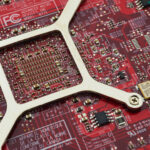Eatery Grease Trap Cleaning: Maintain Your Kitchen Spotless
Have you ever peered under the level of your eatery’s galley? Many managers overlook the crucial importance of maintaining oil interceptors. These traps are crucial in preventing the buildup of lipids, lubricants, and fat (FOG) that can lead to plumbing issues, unpleasant odors, and expensive maintenance. Correct upkeep not only meets sanitation rules but also boosts work flow. A consistent maintenance regimen, aided by a trustworthy fat catcher maintenance, is essential to averting these complications and ensuring a protected, clean space for workers and customers alike.
Comprehending the Necessity of Oil Interceptor Maintenance
Servicing a grease cleaning services clear is essential for any food service kitchen’s smooth operation. It captures fats, lubricants, and grease (FOG) before they enter the sewer line. This process not only shields pipes but also complies with restaurant rules. These regulations ensure public health by requiring adequate fat disposal.
The Function of Fat Catchers in Commercial Kitchens
In a high-traffic diner, fat catchers are essential. They stop clogs in drains, preventing pipe issues. Well-maintained fat catchers enhance sewage, avoid expensive fixes, and aid prevent shutdowns due to cleanliness infractions.
Public Health and Ecological Effects of Neglected Oil Interceptors
Overlooking grease traps can cause public health dangers. FOG accumulation encourages bacteria growth, resulting in unpleasant scents and unhygienic situations. This can result in cleanliness infractions, harming a eatery’s standing and client confidence. Additionally, it creates environmental threats by polluting water sources, affecting animals and habitats.
Regulatory Compliance and Likely Charges for Eateries
Complying with restaurant rules is essential for restaurant owners. Public health agencies establish stringent guidelines for grease trap maintenance and hygiene. Not adhering to these rules can cause reviews and charges, notably hitting a restaurant’s profits. Regular cleaning of grease traps helps prevent these problems, ensuring compliance and avoiding penalties.
Eatery Fat Catcher Upkeep: Top Tips
Effective oil interceptor upkeep is vital for cookhouses to operate efficiently. Knowing when to clean grease traps and noticing indications of a need for immediate attention is crucial. This awareness helps avoid pricey drain troubles and ensures adherence with sanitation guidelines.
Frequency of Cleaning Based on Galley Functions
The need for grease trap cleaning differs with the category and amount of dishes made. A usual standard recommends servicing when the trap is 25% full of fats, fluids, and oils (FOG). Cookhouses dealing with big volumes of fried or lipid-rich meals may require extra maintenance. Consistent inspections aid arrange timely cleanings, control oil accumulation, and support efficient kitchen operations.
Indicators Your Oil Interceptor Requires Prompt Care
Recognizing indications of oil collection can avert upcoming issues for diners. Crucial symptoms comprise:
-
Sluggish water flow: If fluid drains slowly, it indicates there’s a blockage.
-
Bad smells: Unpleasant odors typically indicate there’s too much FOG in the trap.
-
Noticeable oil in basins: Noticing fat in basins requires immediate action.
Handling these symptoms immediately through consistent oil checks and cleaning helps maintain cookhouses clean and prevents plumbing issues.
Expert vs. Do-It-Yourself Oil Interceptor Upkeep
Choosing between Do-It-Yourself and professional grease trap cleaning is a crucial decision for diner managers. Some might decide on Self-Service to cut costs, but the oil interceptor’s intricacies pose major dangers. It’s vital to grasp the servicing specifics to meet health standards and ensure catcher performance.
The Intricacies of Oil Interceptor Upkeep
Fat catchers are essential in cookhouses, trapping lipids, oils, and oils before they enter the pipes. DIY cleaning might overlook essential tasks, leading to obstructions or spills. Essential skills comprise understanding the catcher’s features, opening and maintaining it correctly, and employing the appropriate products. These knowledge necessitate experience and education.
Pros of Using Oil Interceptor Cleaning Service
Using experts for oil interceptor upkeep offers notable pros that exceed DIY costs. They employ specialized equipment for enhanced servicing. Their expertise ensures regulatory compliance. Key advantages involve:
- Comprehensive maintenance that eliminates all buildups.
- Consistent upkeep routines to avoid emergency situations.
- Boosted functionality of oil interceptors, resulting in reduced expenses.
- Specialized knowledge in maintaining oil interceptor intricacies.
| Aspect | Do-It-Yourself Oil Interceptor Upkeep | Professional Maintenance Services |
|---|---|---|
| Cost | Upfront cost-cutting, but likely prolonged charges due to improper cleaning. | Higher upfront cost, but reduced long-term costs through correct servicing. |
| Expertise | Narrow understanding may result in incorrect maintenance. | Skilled professionals ensure complete and correct servicing. |
| Equipment | Regular gear may not be enough for proper upkeep. | Specialized equipment guarantees comprehensive and effective maintenance. |
| Compliance | Possibility of not conforming with sanitation guidelines. | Assists in compliance to local regulations, stopping charges. |
While do-it-yourself oil interceptor upkeep may seem cost-effective, using specialists is often the wiser option. It guarantees the cleanliness and functionality of a eatery’s cookhouse activities.
Grease Interceptor Maintenance Tips
Optimizing fat catcher upkeep is key to a clean kitchen. Identifying your interceptor and its maintenance needs is the initial move. This knowledge enables efficient methods, improving FOG management and preventing errors that result in bigger problems.
Identifying Your Grease Interceptor and Its Servicing Demands
Begin by recognizing your catcher’s kind and capacity. Various types differ in volume and demand unique servicing. Regular inspections are essential for maintenance and preventing buildup. Checking oil amounts aids stop leaks and secures the catcher operates efficiently. A upkeep plan that matches your kitchen’s operations aids in upkeep.
Frequent Errors in Oil Interceptor Upkeep
Many establishments commit errors that damage their oil interceptors. Neglecting inspections can lead to obstructions or backups. Applying aggressive products for removal harms catchers and requires pricey maintenance. Focusing on adequate management and adhering to public health rules assists galleys remain eco-friendly.
| Common Mistakes | Consequences |
|---|---|
| Ignoring routine reviews | Higher chance of blockages and backups |
| Poor FOG disposal practices | Public health charges and hurt to traps |
| Using harmful chemicals | Decreased trap performance |
| Ignoring interceptor capacity | Regular spills and maintenance challenges |
Preventing these errors and applying effective management techniques ensures fat catchers in excellent condition. This guarantees a spotless, rule-following galley for diners.
Additional Cleaning Services for a Hygienic Kitchen
When it comes to upkeeping a hygienic kitchen, options other than oil interceptor upkeep are essential. Investing in professional cookhouse upkeep guarantees comprehensive kitchen upkeep. This includes kitchen degreasing and duct servicing.
Professional Cookhouse Oil Removal Techniques
Cookhouse oil removal is crucial for safety and performance in culinary spaces. It stops slick surfaces, reduces fire risks, and promotes a better food prep area. Proper techniques include:
-
Pressure Washing: Strong liquid flow for thorough scrubbing tough areas.
-
Thermal and Agent Methods: Heat and specialized chemicals for removing tough grease.
-
Hand Cleaning: Physical scrubbing tools and cleaning agents for designated spots.
Value of Duct Servicing
Understanding the significance of ventilation upkeep is crucial for a safe kitchen. Consistent maintenance of airflow systems and pipes diminishes burn threats and boosts air cleanliness. The benefits are numerous:
-
Burn Protection: Eliminating combustible oil accumulation significantly diminishes burn risks.
-
Enhanced Air Cleanliness: Clean exhaust systems improve the healthiness of the working environment.
-
Compliance with Regulations: Complying with public health regulations protects your establishment from penalties.
| Service | Benefits | Frequency |
|---|---|---|
| Kitchen Degreasing | Stops accidents, boosts appliance life | Every 30 days |
| Exhaust Cleaning | Diminishes burn threats, boosts air cleanliness | Once a season |
Smooth cookhouse activities demand a commitment to clean methods. Hiring professional cleaning services boosts safety and fosters a better space for workers and patrons alike.
Opting for the Best Fat Catcher Maintenance
Opting for the best grease trap service is crucial for proper galley functioning. It’s important to seek services with the appropriate certifications and a history of reliability. Professional pumping services with high ratings provide knowledge into their effectiveness and client-oriented service.
A reliable oil interceptor upkeep must follow regional rules and emphasize green strategies. Partnering with expert providers dedicated to top upkeep can boost your fat disposal strategies. This approach ensures better cookhouse functions and reduces the risk of sanitation breaches.
Building a long-term partnership with dependable specialist companies can make oil handling easier and protect your business from drain troubles. By focusing on these key factors, you can maintain your cookhouse operating smoothly. This secures that fat catchers are maintained and cleared as necessary.



